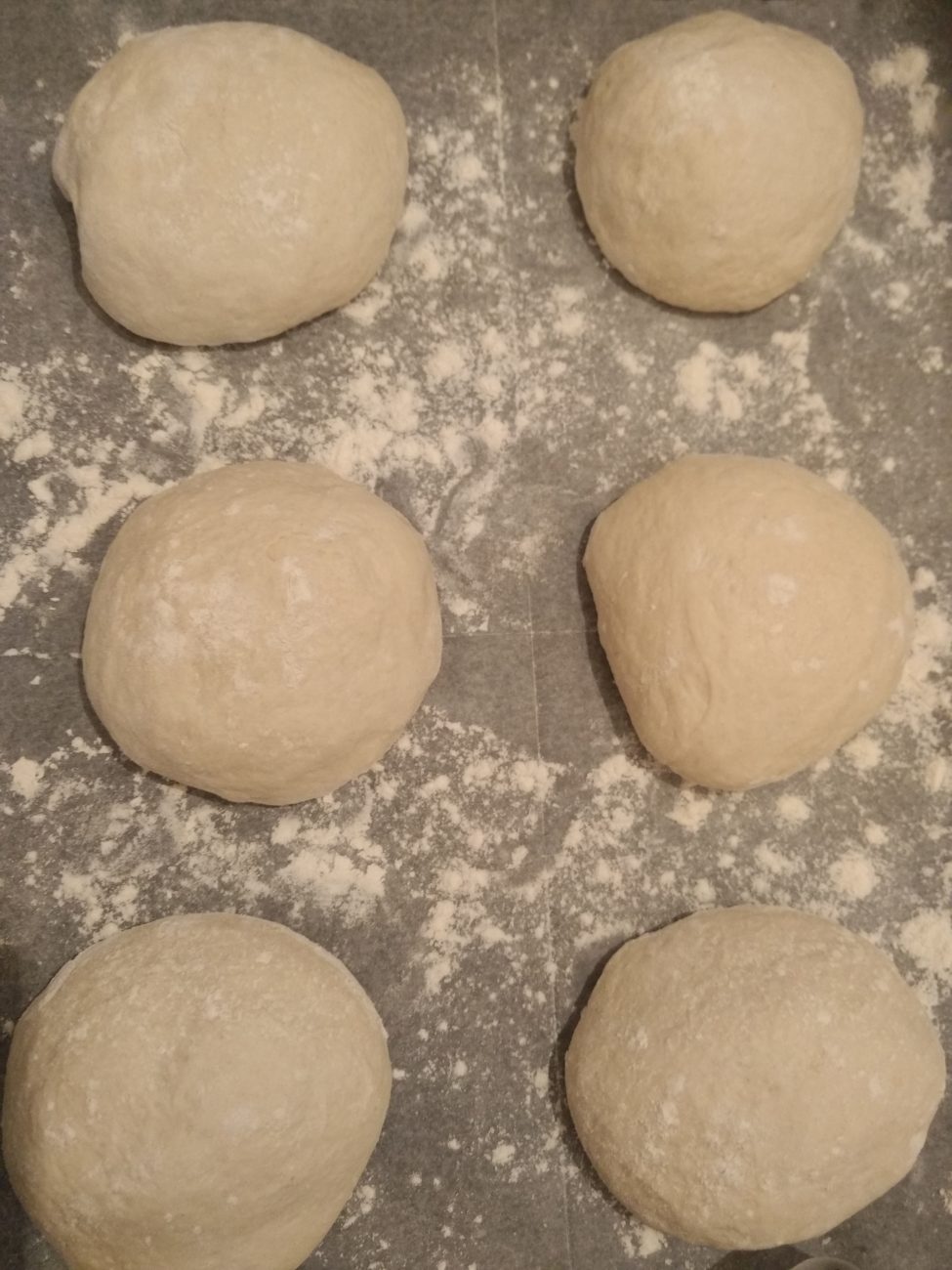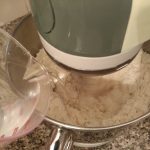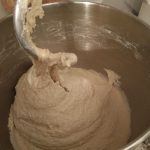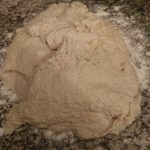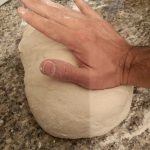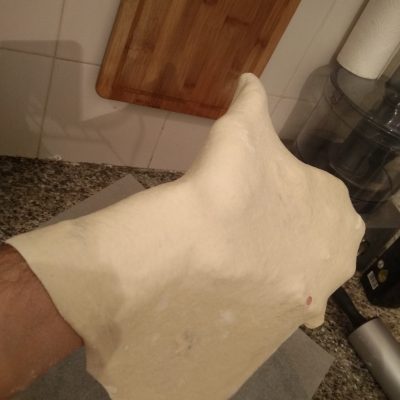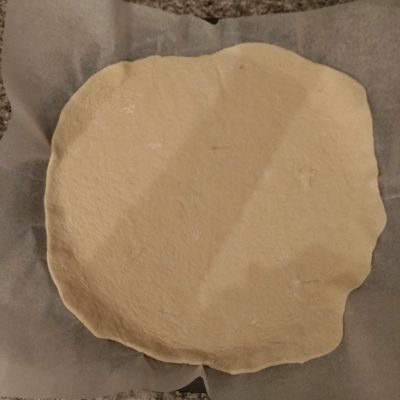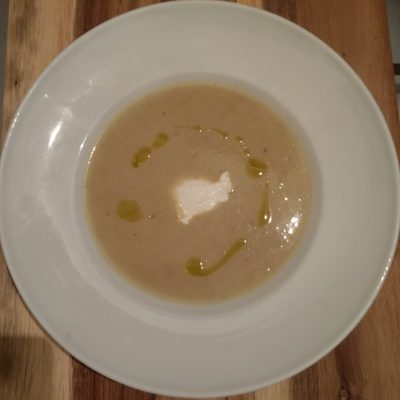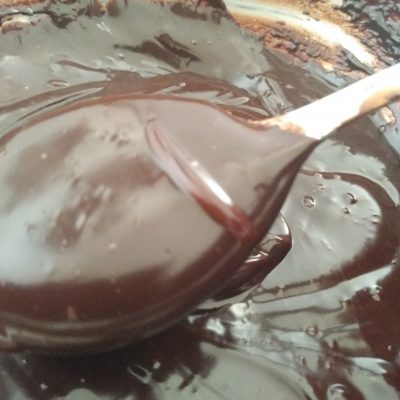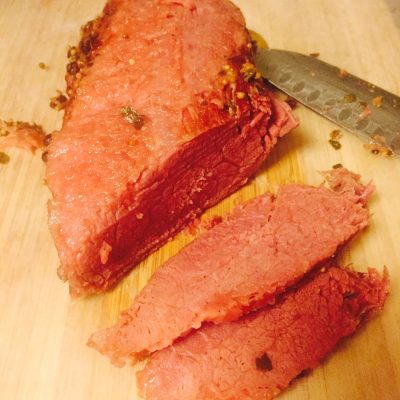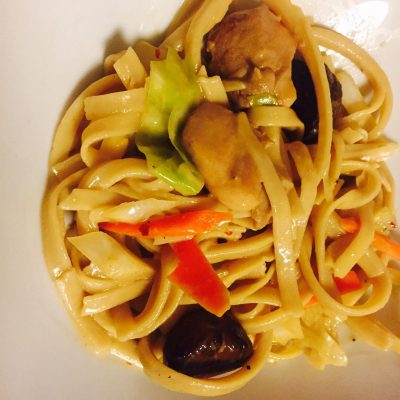Ingredients
-
450g/ 1lb all purpose flour
-
450g/ 1lb Bread flour
-
5g/ 1 tbsp instant dry yeast
-
¼ cup of warm water for the yeast
-
1 tbsp Sugar
-
25g/ 1½ tbsp Salt
-
½ litre/ 17 fl oz water
-
3 tbsp Olive oil
-
some more flour for dusting
Directions
When it comes to pizza the world divides into 3 groups, those who love the thin-crust pizza dough, those who love the thick-crust pizza dough and those who love them both, I happened to be on the 3rd group.
I love pizza in any form or size, thick or thin, with a lot of sauce or no sauce at all, with mozzarella only or heavy coated parmesan cheese, endless toppings or plain Margarita.
The thin-crust pizza dough is unique by the fact that we want to create a thin pizza while keeping it airy and light, condensed thin pizza will be a disaster, let’s go over all the stages for the perfect thin pizza.
Thin-crust pizza dough – the flour
The most important part of the dough is the amount of Gluten in the flour, to be more precise it’s the ratio of protein in the flour that along with a yeast and water creates the miracle which are the bubbles.
When we’re talking about pizza we immediately think of the pizza maker who throws its pizza in the air while stretching it out, well, I’m not very artistic like those crazy bakers but, we are looking for the flexible dough structure.
Wheat grains are composed of starch molecules and protein molecules as well as gliadin and glutenin, when adding the catalysator of water and yeast the bubbles emerge, so let’s put it this way, the more protein you have in the flour, the larger bubbles you will have in the dough (we want those bubbles).
This is the reason I’m using a combination of all-purpose flour and bread flour.
The bread flour has high protein ratio 11-14% and the all-purpose flour has 8-10% protein ratio, combining them both will ensure high protein ratio and good amount of flexibility.
Of course, if you have a good Italian “00” flour or specialized pizza flour, by all means, use it, the results will be optimum, but the bread plus all-purpose flour will give you great results as well.
The yeast
There is not right or wrong when it comes to yeast, I tend to use the dry instant yeast, just keep in mind that if you use fresh yeast you need to multiply quantities by 3 meaning that for 5 grams of dry yeast you need to use 15 grams of fresh yeast.
Proofing the dough
When it comes to forming gluten connections and developing strong deep dough taste, we need time.
I see many recipes that give the dough a 10 minutes rest and send the pizza into the oven, hey… it’s a thin-crust pizza dough, we don’t need the proofing, its thin right?
Well, it does need the proofing and a lot of it, remember that we need the flexible texture, the dough needs to be stretched to the point it’s almost transparent, for this to happen, the gluten connections need to be formed and this takes time.
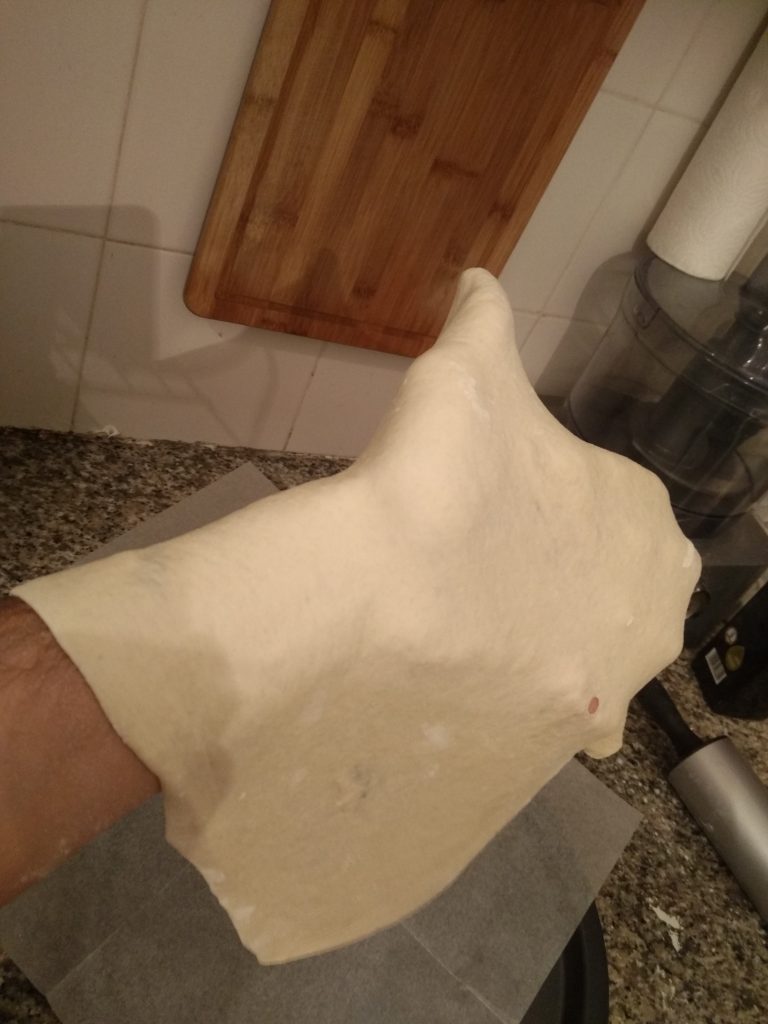
Optimally, the dough needs to be proofed in 3 stages, first one, after we mix all the ingredients it rests in the fridge overnight, second proofing is after it comes out of the fridge for another 2-3 hours and 3rd proofing is after we divide the dough into small balls and we let each pizza dough raise separately.
Stretching the dough
I use a combination of a rolling pin and hands, I start by flattening the dough with a rolling pin up until the dough is about 2-inch-thick, after this stage I work it out with my hands stretching the dough by turning it in the air (not throwing it into the air…my sealing is not that high…).
If the dough is showing high resistance (it shouldn’t if you followed my instructions here), just open the dough with your rolling pin and leave it for 10 minutes, come back to it and it will cooperate.
The key to opening a good pizza dough is not fighting it, we want the dough to cooperate, only this way it will give us the results we want.
Steps
|
1
Done
15 minutes
|
mixing all ingredientsIn a small bowl, add the warm water yeast and sugar, mix with 2 table spoons of the flour and rest for 5 minutes. |
|
2
Done
24 hrs
|
proofing the doughDust the dough with some extra flour and place it in a bowl, cover with a plastic wrap. |
|
3
Done
|
shaping the dough |

